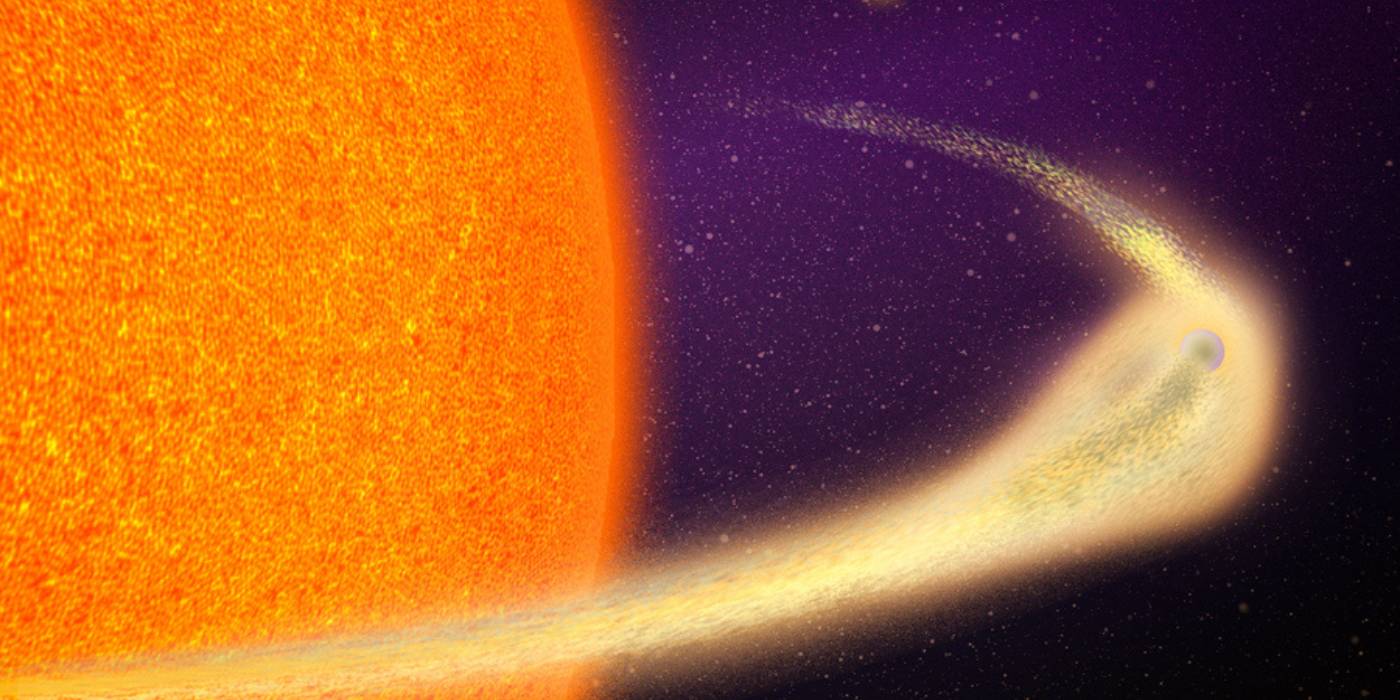A Planet Reduced to Dust
BD+05 4868 b belongs to a rare category of extrasolar planets known as disintegrating exoplanets. These worlds are so close to their host stars that their surfaces melt and evaporate, creating vast clouds of dust. This particular exoplanet orbits its star every 30.5 hours at a distance of just 0.02 astronomical units (AU), twenty times closer than Mercury orbits our Sun.
The host star is a K-type main-sequence star, a dwarf star approximately 30% smaller and 1,000°C cooler than the Sun. Its age is estimated at roughly twice that of the Sun, making the presence of a rapidly vaporizing planet all the more scientifically intriguing.
Current observations indicate that BD+05 4868 b likely possesses a small solid body, possibly similar in size to Mercury or even Earth’s Moon. However, what dominates its observational profile is an enormous dust tail – a feature more commonly associated with comets. This tail is so extensive that it covers half of the planet’s orbit, dramatically reducing the star’s brightness during transit.
The Science of Planetary Vaporization
The intense proximity to its star exposes BD+05 4868 b to extreme temperatures capable of melting rock. According to Dr. Hon, the planet loses material at a rate equivalent to the mass of Mount Everest during every orbit. This material is ejected as silicate vapor, which subsequently cools and condenses into dust, forming the distinctive tail.
Unlike more massive planets that can maintain their atmospheres due to stronger surface gravity, BD+05 4868 b is believed to be low-mass. This weak gravitational hold allows vaporized material to escape more easily, driving the rapid rate of disintegration. While ultra-short-period planets are not uncommon, only four, including BD+05 4868 b, have been confirmed to possess active dust tails.
A Unique Opportunity for Planetary Composition Analysis
What makes this discovery invaluable is the potential to analyze the planet’s internal composition. The dust tail, composed of evaporated material from the planet’s surface, may contain minerals from the crust, mantle, or even core. According to Dr. Hon, this offers a rare observational window into the internal structure of a distant world.
Spectroscopic analysis, particularly using transmission spectroscopy (the study of starlight filtered through a planet’s atmosphere or tail), could reveal the mineralogical makeup of the disintegrating material. Such studies can provide insights into the planet’s geological history and formation processes.
Preparing for Follow-Up Observations
One reason BD+05 4868 b represents an exceptional target for follow-up studies is its brightness. Discovered by TESS, which focuses on relatively nearby stellar systems, the planet’s host star is significantly brighter than those of previously known disintegrating exoplanets, all of which were discovered by the Kepler mission. This increased brightness enables higher-quality data collection and detailed spectroscopic studies.
Future observations with the James Webb Space Telescope (JWST) and ground-based telescopes are already planned. These investigations will focus on determining the composition of the dust tail and constraining the planet’s mass through radial velocity measurements, which track the subtle movements of the star caused by the gravitational pull of the orbiting planet.
The Broader Implications
Beyond its individual significance, BD+05 4868 b raises broader questions about the evolution of planetary systems. As Dr. Hon noted, the mechanism by which such a planet migrates into a death spiral orbit remains an open question. Possibilities include gravitational perturbations from other planets or companion stars.
The discovery also suggests that additional disintegrating exoplanets may be awaiting identification within existing datasets. Understanding these worlds could transform our knowledge of planetary lifecycles and the diverse outcomes of planetary system evolution.
BD+05 4868 b offers a unique laboratory for observing planetary destruction in real-time. Its discovery demonstrates the power of large-scale survey missions, such as TESS, and highlights the importance of diligent data analysis.
Watch the full SETI Live conversation here, and read the research paper here.
